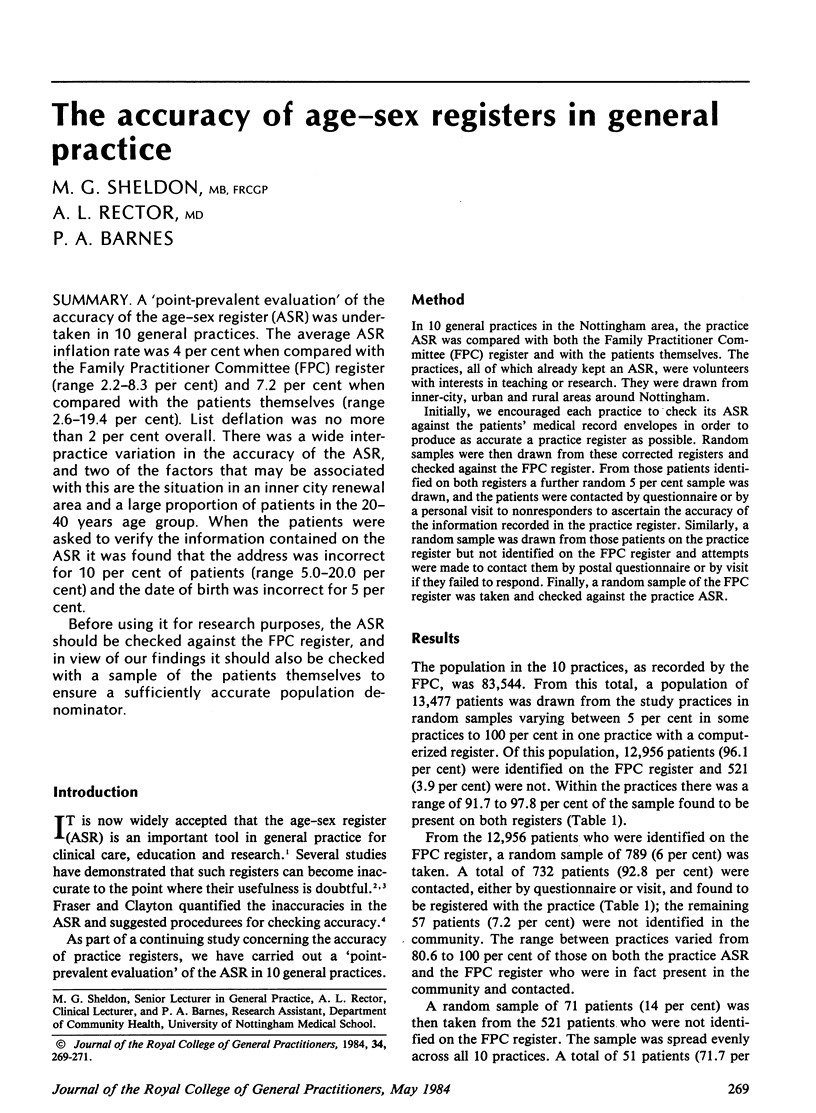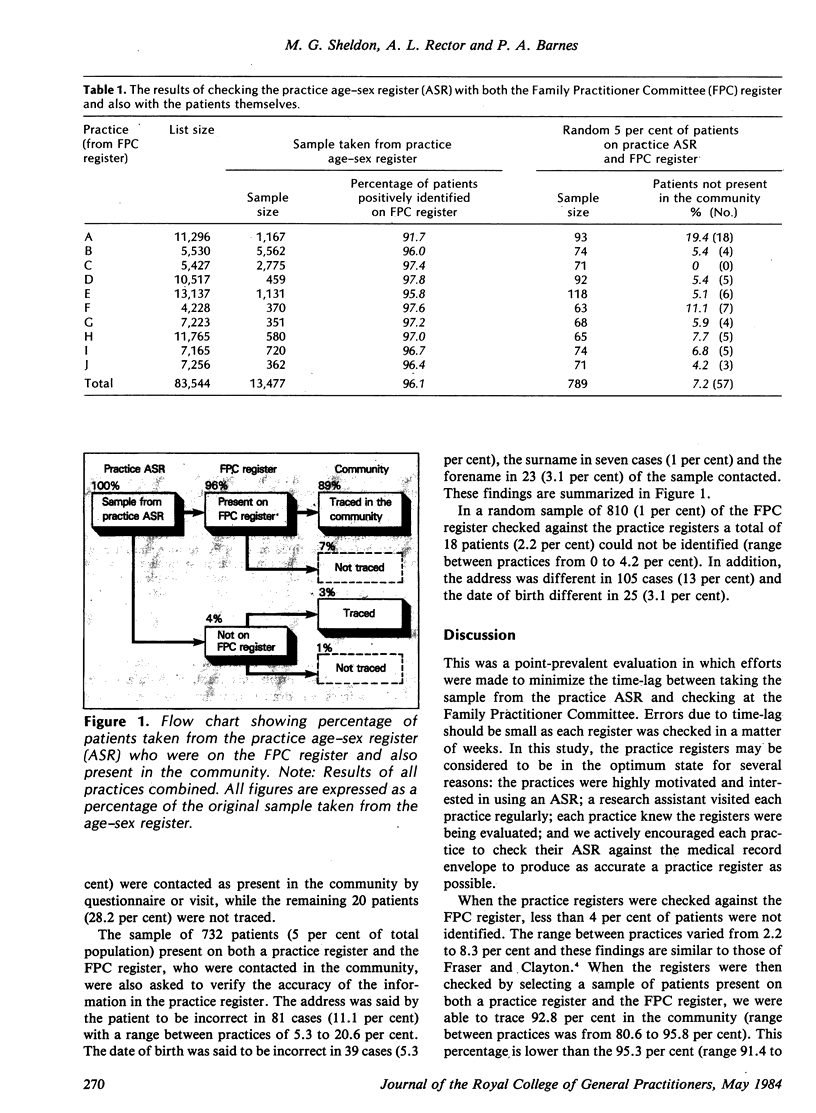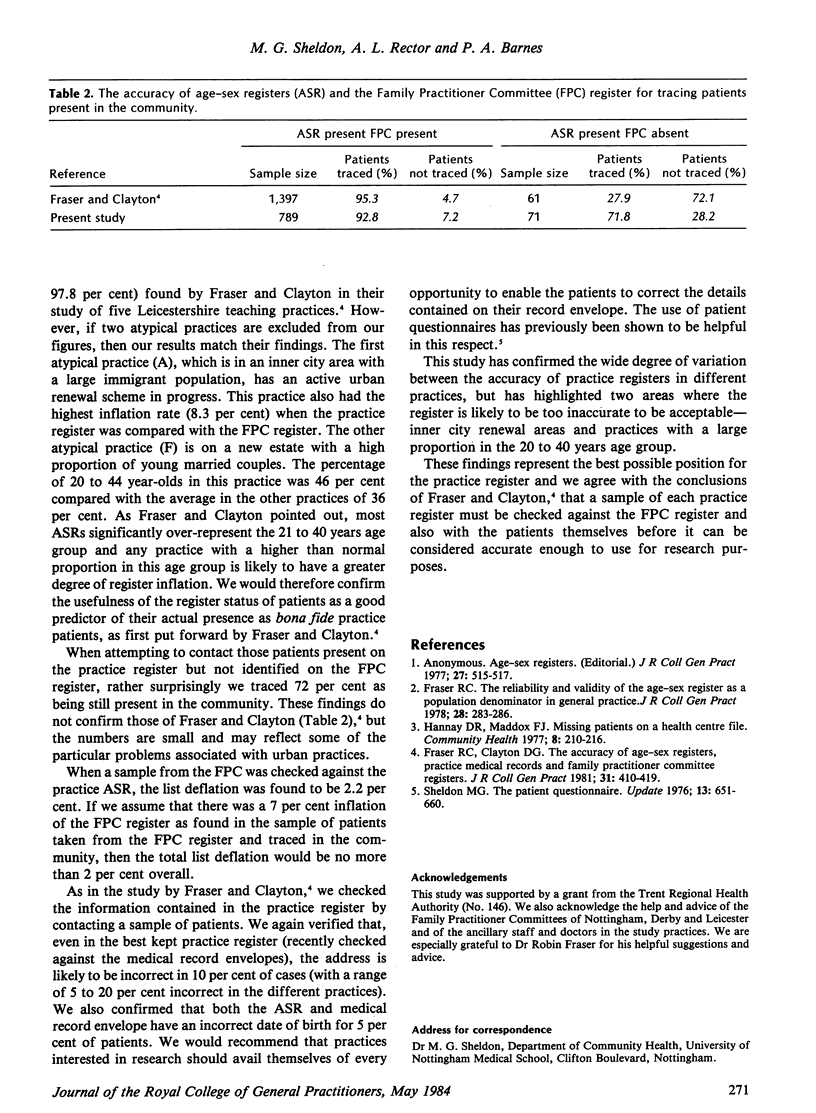Abstract
A `point-prevalent evaluation' of the accuracy of the age-sex register (ASR) was undertaken in 10 general practices. The average ASR inflation rate was 4 per cent when compared with the Family Practitioner Committee (FPC) register (range 2.2-8.3 per cent) and 7.2 per cent when compared with the patients themselves (range 2.6-19.4 per cent). List deflation was no more than 2 per cent overall. There was a wide interpractice variation in the accuracy of the ASR, and two of the factors that may be associated with this are the situation in an inner city renewal area and a large proportion of patients in the 20-40 years age group. When the patients were asked to verify the information contained on the ASR it was found that the address was incorrect for 10 per cent of patients (range 5.0-20.0 per cent) and the date of birth was incorrect for 5 per cent.
Before using it for research purposes, the ASR should be checked against the FPC register, and in view of our findings it should also be checked with a sample of the patients themselves to ensure a sufficiently accurate population denominator.
Full text
PDF


Images in this article
Selected References
These references are in PubMed. This may not be the complete list of references from this article.
- Fraser R. C., Clayton D. G. The accuracy of age-sex registers, practice medical records and family practitioner committee registers. J R Coll Gen Pract. 1981 Jul;31(228):410–419. [PMC free article] [PubMed] [Google Scholar]
- Fraser R. C. The reliability and validity of the age-sex register as a population denominator in general practice. J R Coll Gen Pract. 1978 May;28(190):283–286. [PMC free article] [PubMed] [Google Scholar]
- Hannay D. R., Maddox E. J. Missing patients on a health centre file. Community Health (Bristol) 1977 May;8(4):210–216. [PubMed] [Google Scholar]



